Users’ guide for the Field II program
Release 3.20, November 19, 2010
Jørgen Arendt Jensen
May 6, 2011
Jørgen Arendt Jensen
May 6, 2011
Department of Electrical Engineering, Build. 349,
Technical University of Denmark
DK-2800 Lyngby, Denmark
E-mail: jaj@elektro.dtu.dk
Web: http://server.elektro.dtu.dk/www/jaj/field/
�
1
Introduction
2 Program organization
3 Method of simulation
3.1
3.2
3.3
3.4 Attenuation .
The spatial impulse response . .
.
Simulation .
.
.
Focusing and apodization . .
.
.
.
.
.
.
.
.
.
.
.
.
.
.
.
.
.
.
. . .
.
.
.
.
.
.
.
.
.
.
.
.
.
.
.
.
.
4
Installation
5 Description of Matlab procedures
. .
5.1
5.2
5.3
5.4
5.5
.
.
.
.
List of current procedures
.
.
Procedures for Field initialization . .
.
.
Procedures for transducer definition . .
.
Procedures for element manipulation . .
Procedures for field calculation .
.
.
.
.
6 Examples
6.1
6.2
6.3
Phased array imaging .
.
Linear array imaging .
Flow data generation .
.
.
.
.
.
.
.
.
.
.
.
.
.
.
.
.
.
.
.
.
.
.
.
.
.
.
.
.
Bibliography
.
.
.
.
.
.
.
.
.
.
.
.
.
.
.
.
.
.
.
.
.
.
.
.
.
.
.
.
.
.
.
.
.
.
.
.
.
.
.
.
.
.
.
.
.
.
.
.
.
.
.
.
.
.
.
.
.
.
.
.
.
.
.
.
.
.
.
.
.
.
.
.
.
.
.
.
.
.
.
.
.
.
.
.
.
.
.
.
.
.
.
.
.
.
.
.
.
.
.
.
. .
. .
.
.
. .
.
.
. .
.
.
.
.
.
.
.
.
CONTENTS
.
.
.
.
.
.
.
.
.
.
.
.
.
.
.
.
.
.
.
.
.
.
.
.
.
.
.
.
.
.
.
.
.
.
.
.
.
.
.
.
.
.
.
.
.
.
.
.
.
.
.
.
.
.
.
.
.
.
.
.
.
.
.
.
.
.
.
.
.
.
.
.
.
.
.
.
.
.
.
.
.
.
.
.
.
.
.
.
.
.
.
.
.
.
.
.
.
.
.
.
.
.
.
.
.
.
.
.
.
.
. .
.
.
. .
.
.
. .
.
.
. .
.
.
. .
.
.
. .
.
.
. .
.
.
. .
. .
.
. .
.
.
. .
. .
. . .
.
. .
. . .
.
.
.
.
.
.
.
.
.
.
.
.
.
.
.
.
.
.
.
.
.
.
.
.
.
.
.
.
.
.
.
.
.
.
.
.
.
.
.
.
. .
.
.
.
.
.
.
.
.
.
.
.
.
.
.
.
.
.
.
.
.
. .
.
. .
.
. .
.
.
. .
. . .
.
.
.
. . .
.
.
.
.
.
.
. .
.
.
.
.
. . .
. .
.
.
. .
3
5
7
7
7
8
8
9
11
11
13
17
45
50
59
59
61
64
66
i
�
ii
�
LIST OF FIGURES
.
.
.
.
.
.
.
.
.
.
.
.
.
.
.
.
.
.
.
.
.
.
.
.
.
.
.
.
.
.
.
.
.
.
.
.
.
.
.
.
.
.
.
.
.
.
.
.
.
.
.
.
.
.
.
.
.
.
.
.
.
.
.
.
.
.
.
.
.
.
.
.
.
.
.
.
.
.
.
.
.
.
.
.
.
.
.
.
. .
. .
. .
.
.
. .
.
.
. .
.
.
30 mm.
.
. .
. .
.
equal to 30 mm. . .
. .
5.1 Concave, round transducer with a radius of 8 mm divided into 1 by 1 mm mathematical elements.
5.2 Rectangles for a convex array with Rconvex equal to 20 mm.
. .
.
5.3 Rectangles for an elevation focused, convex array with Rfocus equal to 10 mm and Rconvex equal to
. .
5.4 Rectangles for an elevation focused, multi-row, convex array with Rfocus equal to 7 mm and Rconvex
. .
. .
.
. .
5.5 Rectangles for an elevation focused, linear array with Rfocus equal to 15 mm.
.
.
.
5.6 Rectangles for an elevation focused, multi-row linear array with Rfocus equal to 10 mm and 5 rows.
. .
.
.
.
.
5.7 Display of the geometry and apodization of a linear array transducer. . .
. .
.
.
.
5.8 Rectangles for a 16 elements linear array transducer.
.
.
. .
. .
5.9 Geomtery of multi-row linear array transducer. Currently x and y has been switched.
.
. .
.
5.10 Rectangles for a 16 by 5 elements multi-row transducer. . .
.
.
.
. .
5.11 Piston transducer with a radius of 8 mm divided into 1 by 1 mm mathematical elements.
.
. .
.
.
.
.
5.12 Fully populated two-dimensional array with 11 by 13 elements. .
.
. .
.
.
. .
5.13 Partially populated two-dimensional array with 23 elements.
.
.
. .
.
5.14 Linear array transducer with a fixed apodization of the mathematical elements.
.
.
. .
.
.
5.15 Intensity profile for linear array transducer with an elevation focus lens.
.
.
5.16 Example of calculated response when using different physical element excitations.
. .
.
.
5.17 Received voltage traces from the individual elements of a 16 elements linear array transducer, when
. .
5.18 Received voltage traces from the individual elements of a linear array transducer (top) and the sum of
. .
transmitting with three different elements.
all the individual responses (bottom). . .
.
.
.
.
.
.
.
.
. .
.
.
.
.
.
.
.
.
.
.
.
.
. .
.
.
.
.
.
.
.
.
.
.
.
.
.
.
.
.
.
.
.
.
.
.
.
.
.
.
.
.
. .
.
.
.
.
.
.
.
.
.
.
.
.
.
.
.
.
.
.
.
.
.
.
.
.
.
.
.
.
.
.
.
.
.
.
.
.
.
.
.
.
.
.
.
.
.
.
.
.
.
.
.
.
.
.
.
.
.
.
.
.
.
.
.
.
.
.
.
.
.
.
.
.
.
.
.
.
.
.
.
.
.
.
.
.
.
.
.
.
.
.
.
.
.
.
.
.
.
.
.
.
.
.
.
.
.
.
.
.
.
.
.
.
.
.
.
.
19
21
22
24
26
27
30
32
33
34
36
43
44
46
47
49
55
57
1
�
2
�
CHAPTER
ONE
Introduction
This is the user guide for the version 3.20 of November 19, 2010 of the Field II program. This version of the program
runs under Matlab 71 and can simulate all kinds ultrasound transducers and the associated images. The focusing and
apodization of the transducers can be controlled dynamically, and it is, thus, possible to simulate all kinds of ultrasound
imaging systems. The latest version can also be used for synthetic aperture imaging.
The program is free for use, if you make a proper reference to the papers describing the program, when you publish
results from its use. The reference are [1] and [2]. Also the name of the program (Field II) should be mentioned in the
publication. Some unfortunately forget this, and the program will only stay in the public domain, if people continue
to properly acknowledge its use.
This guide is intended as a presentation of the currently available routines. It includes a few examples and gives a
small amount of background information. It is, however, not intended as an introduction to ultrasound scanning, and
the reader should consult the extensive literature on this.
The program executables can be downloaded from the Web-site for the program:
http://server.elektro.dtu.dk/www/jaj/field/
It currently exist for a number of platforms like Windows, Linux, HP-UX, Sun and SGI. The availability of the latest
version is dependent on my access to machines, which often varies, and all working versions cannot be guaranteed.
The web site also contains more extensive examples than are given in this guide, and up-to-date references and papers
can also be found on the web-site.
The manual is made as a clickable pdf document with hyperlinks. All links are indicated in blue, and when clicked on
will lead to the indicated references, which can be a web-site, figure, equation, etc.
The manual is organized as follows: Chapter 2 gives an overview of the organization of the program and how it is
connected to Matlab. Chapter 4 details the installation from the programs on the web-site. A listing of all procedures
callable in the program is given in Chapter 5 and finally a few examples are given in 6. More can be found on the web.
Jørgen Arendt Jensen
March 22, 2011
Department of Electrical Engineering, Build. 349,
Technical University of Denmark
DK-2800 Lyngby, Denmark
E-mail: jaj@elektro.dtu.dk
1Older versions can be found on the web-site for Matlab 4, 5 and 6
3
�
4
�
CHAPTER
TWO
Program organization
The program consists of a C program and a number of Matlab m-functions that calls this program. All calculations
are performed by the C program, and all data is kept by the C program.
Three types of m-functions are found. The are used for initializing the program, defining and manipulating transducers,
and for performing calculations. The initializing routines are preceeded by field , the transducer commands by xdc ,
and the calculation routines by calc . Help on use of the routines can be obtained by typing help .
Each of the routines are described in the following section and then three examples of use are given. The first shows
how a phased array image is generated, the second simulates a flow system, and the last example is for a linear array
system. The last example uses a computer generated phantom. The m-file for this phantom is also given in the example
section.
5
�
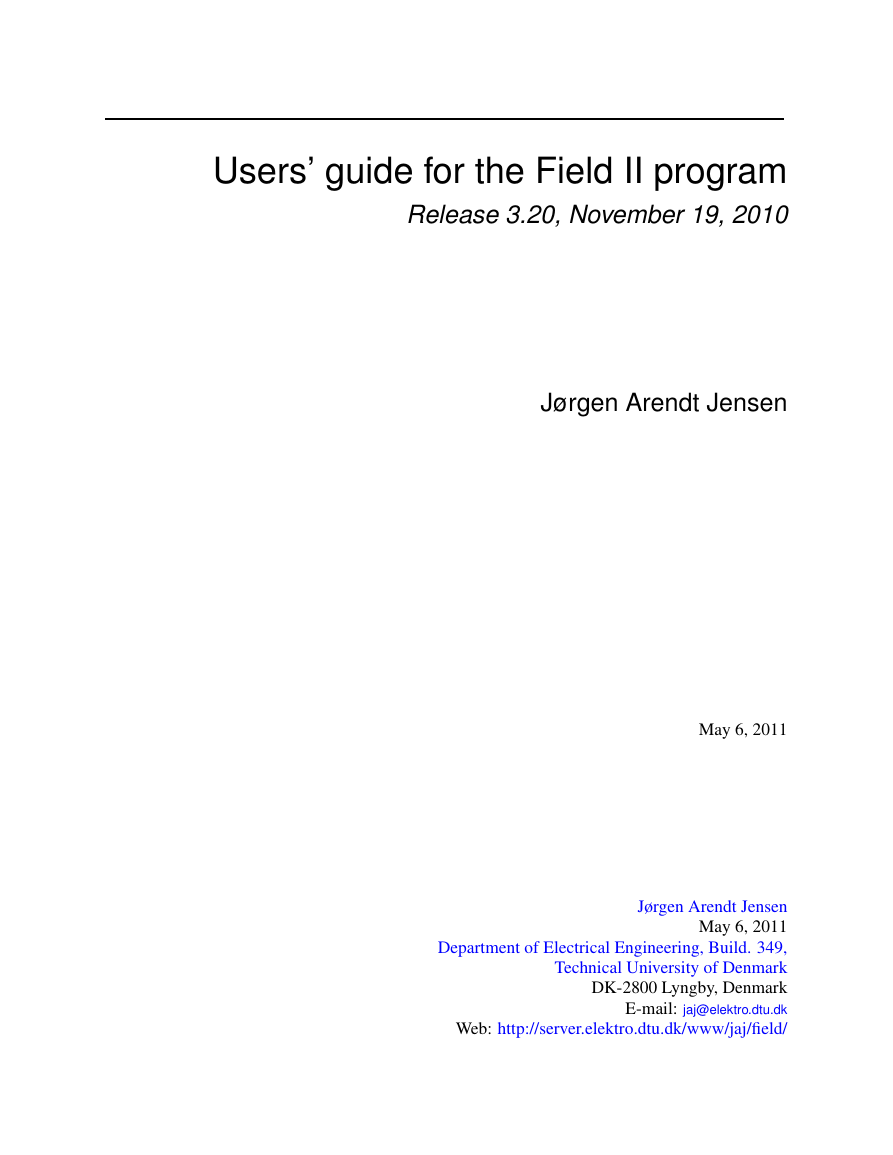
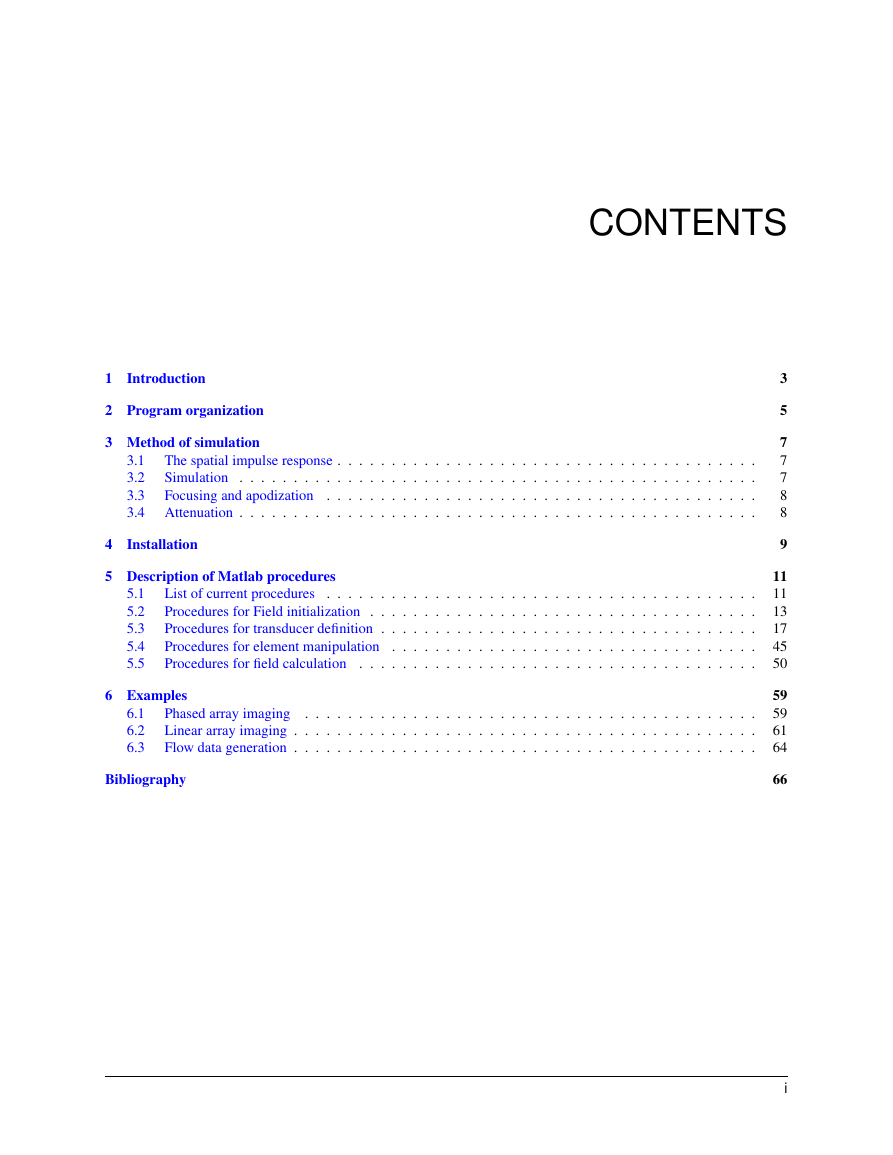
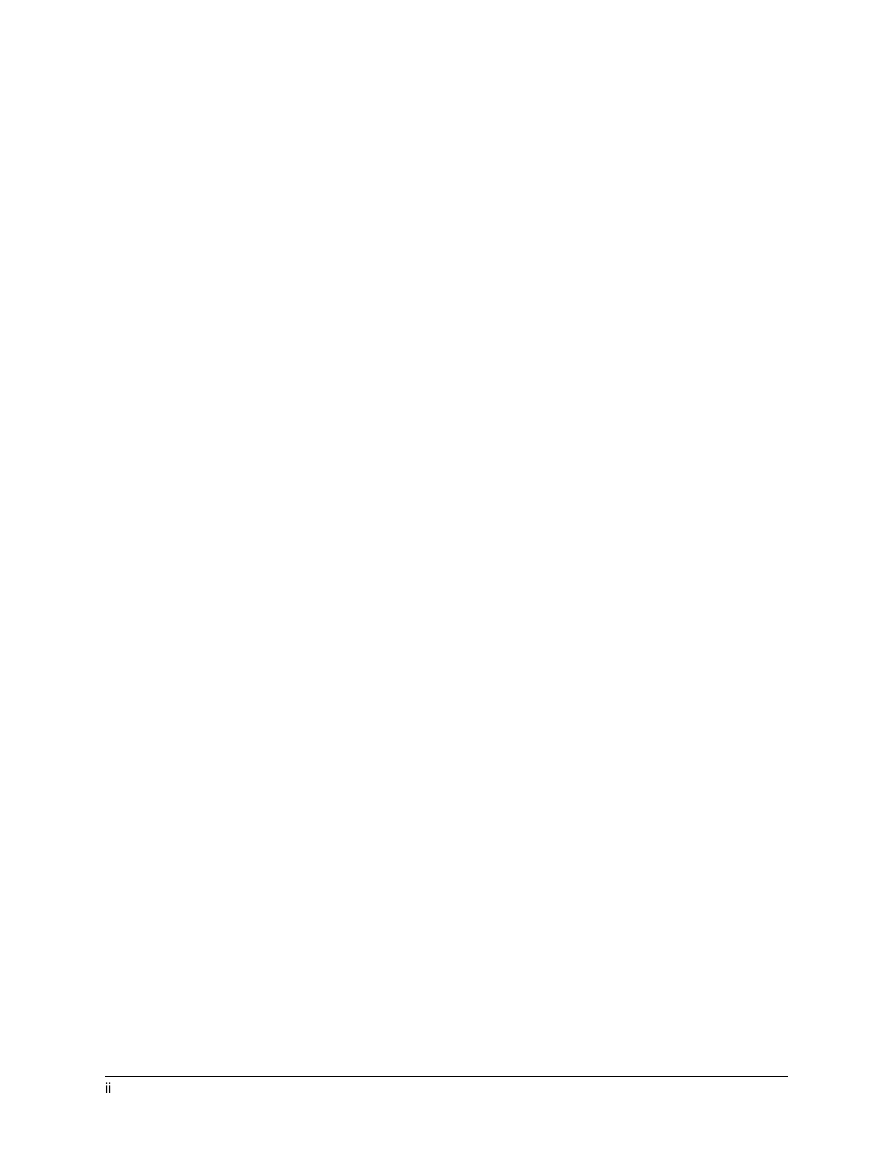
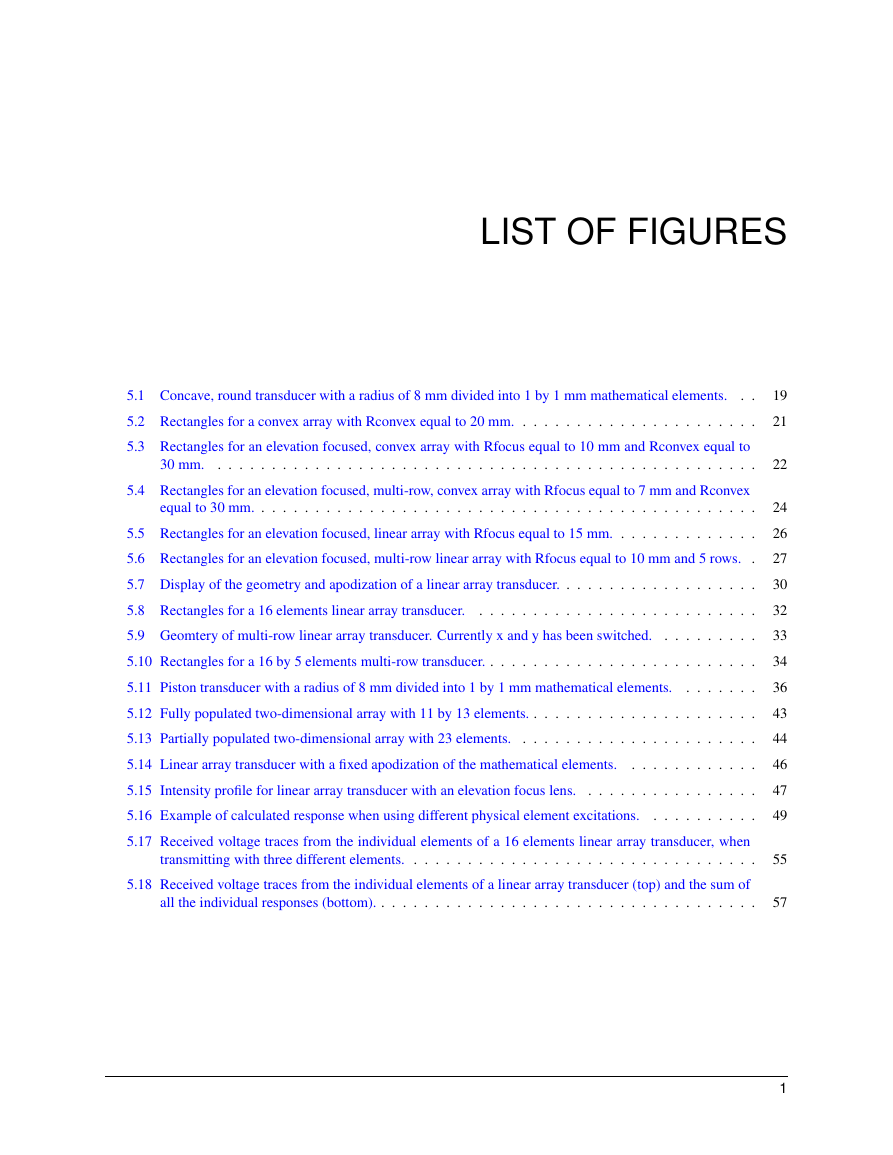
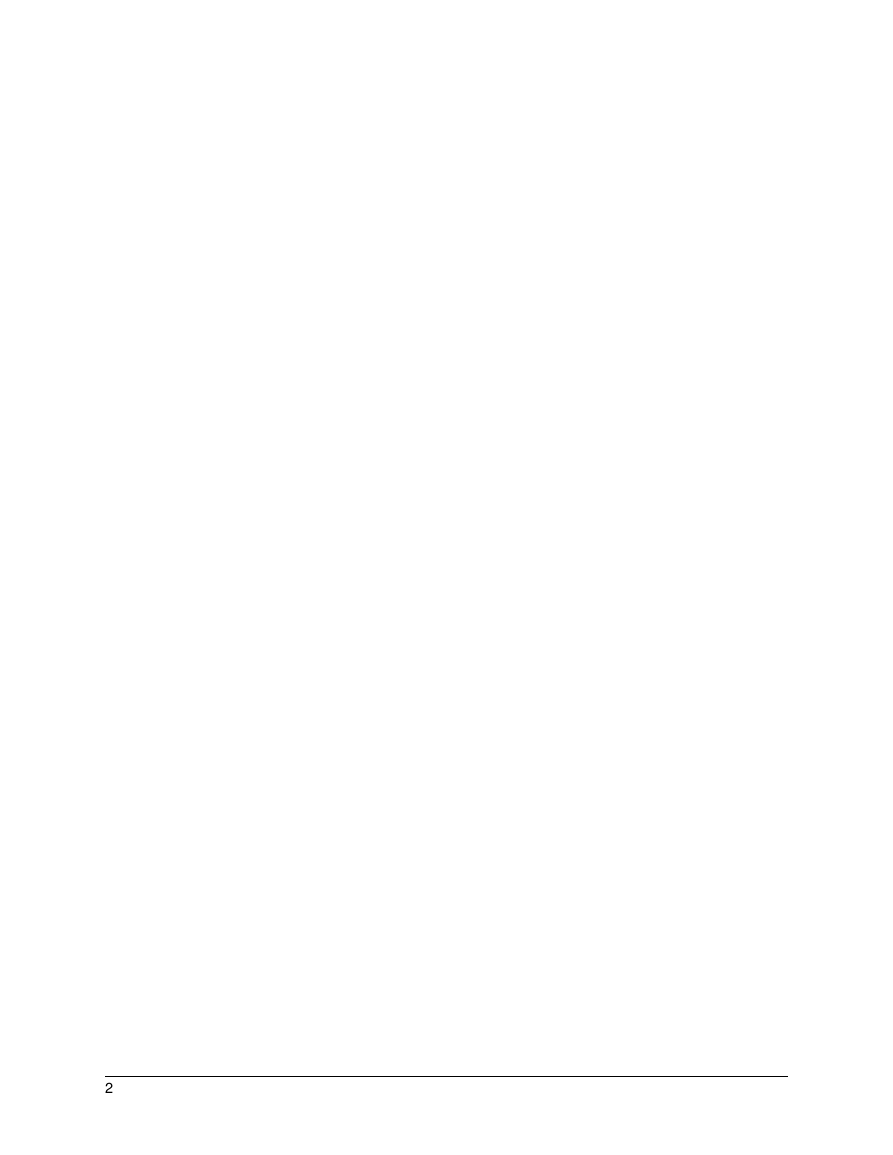
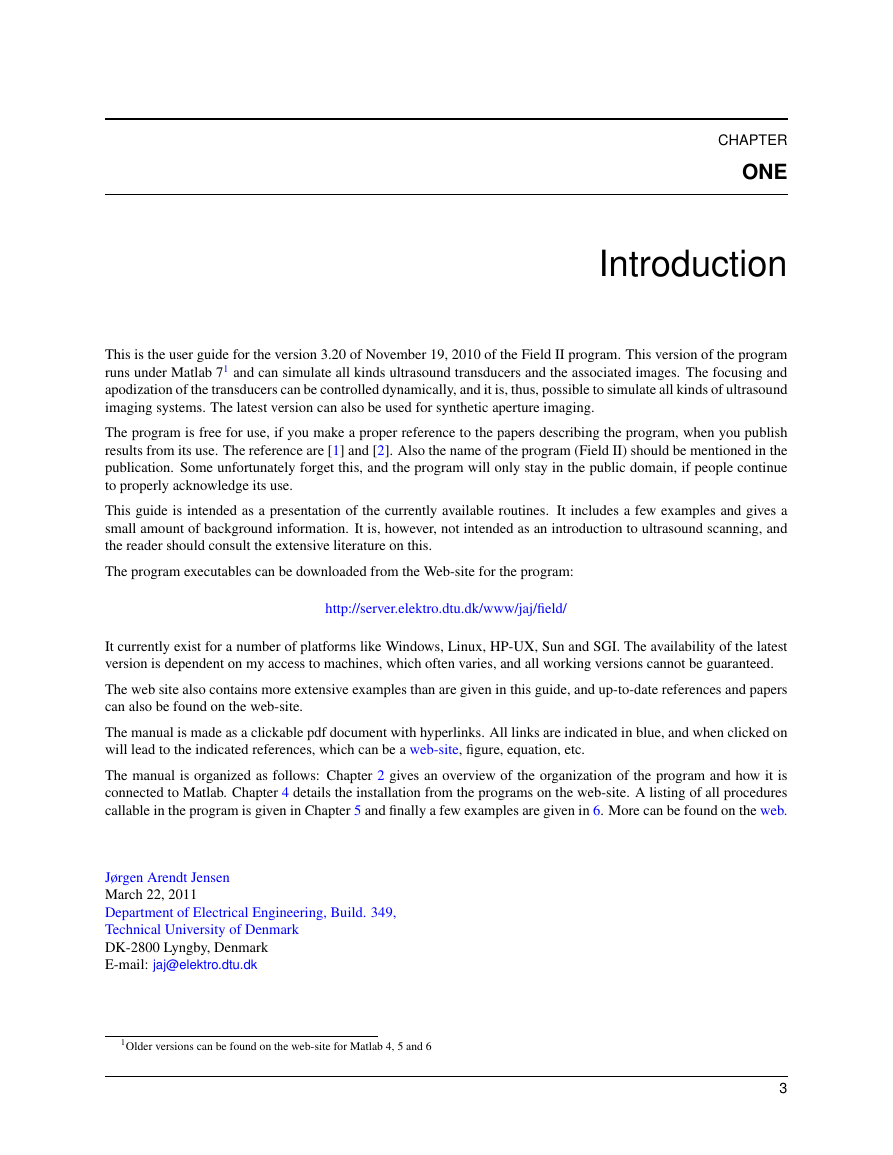
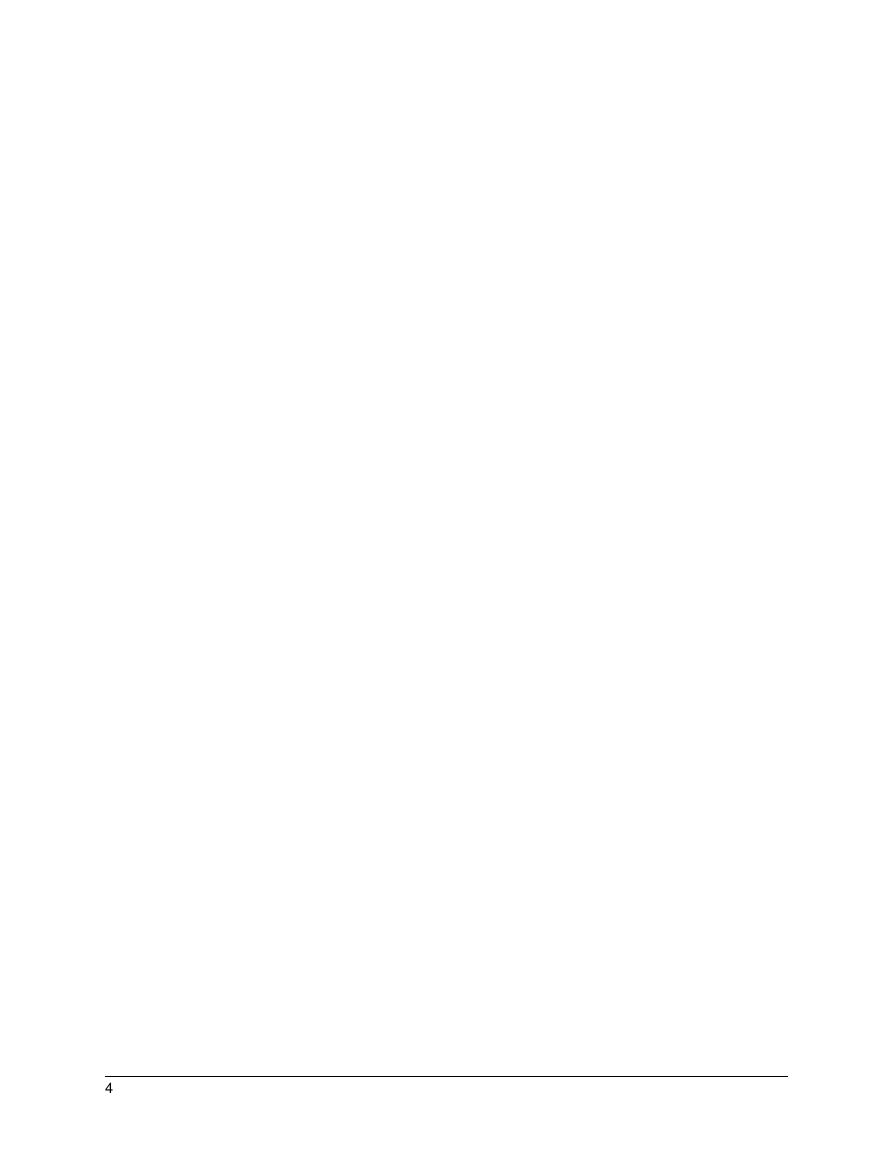
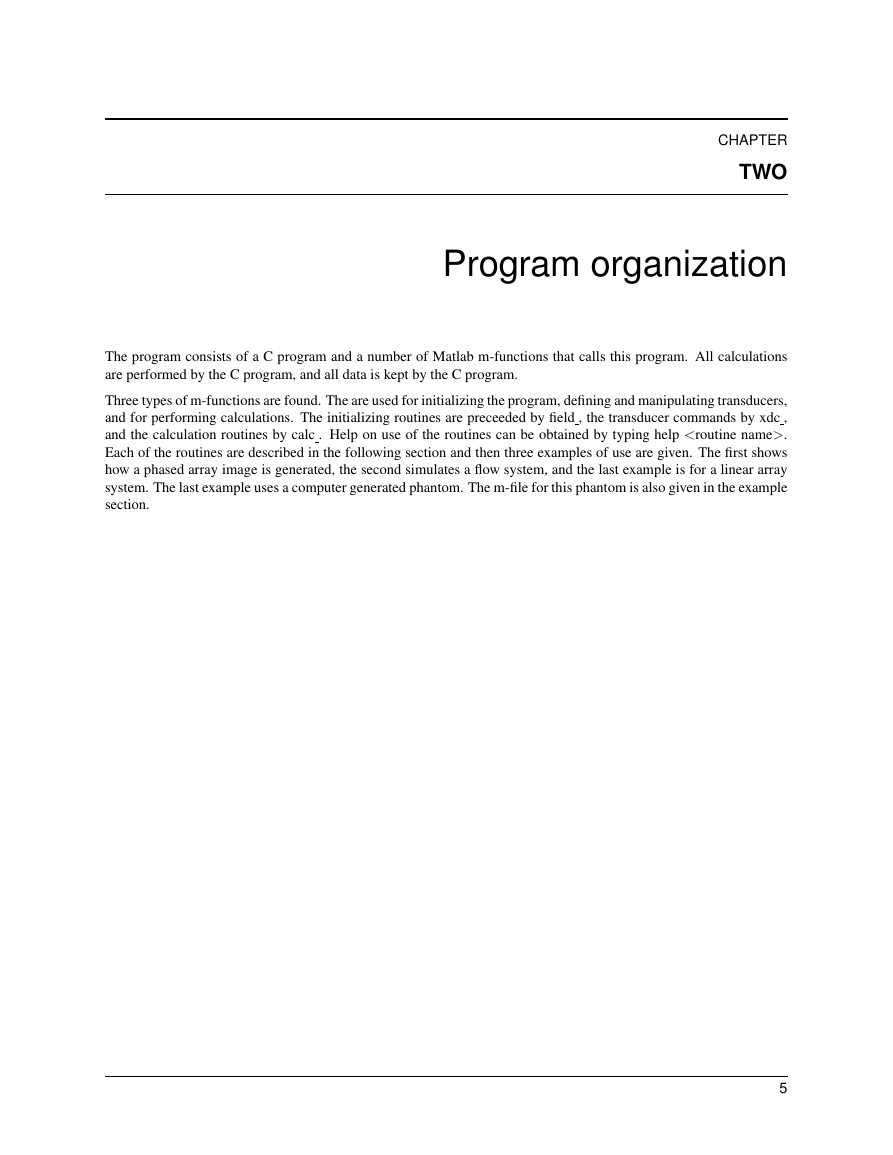








 2023年江西萍乡中考道德与法治真题及答案.doc
2023年江西萍乡中考道德与法治真题及答案.doc 2012年重庆南川中考生物真题及答案.doc
2012年重庆南川中考生物真题及答案.doc 2013年江西师范大学地理学综合及文艺理论基础考研真题.doc
2013年江西师范大学地理学综合及文艺理论基础考研真题.doc 2020年四川甘孜小升初语文真题及答案I卷.doc
2020年四川甘孜小升初语文真题及答案I卷.doc 2020年注册岩土工程师专业基础考试真题及答案.doc
2020年注册岩土工程师专业基础考试真题及答案.doc 2023-2024学年福建省厦门市九年级上学期数学月考试题及答案.doc
2023-2024学年福建省厦门市九年级上学期数学月考试题及答案.doc 2021-2022学年辽宁省沈阳市大东区九年级上学期语文期末试题及答案.doc
2021-2022学年辽宁省沈阳市大东区九年级上学期语文期末试题及答案.doc 2022-2023学年北京东城区初三第一学期物理期末试卷及答案.doc
2022-2023学年北京东城区初三第一学期物理期末试卷及答案.doc 2018上半年江西教师资格初中地理学科知识与教学能力真题及答案.doc
2018上半年江西教师资格初中地理学科知识与教学能力真题及答案.doc 2012年河北国家公务员申论考试真题及答案-省级.doc
2012年河北国家公务员申论考试真题及答案-省级.doc 2020-2021学年江苏省扬州市江都区邵樊片九年级上学期数学第一次质量检测试题及答案.doc
2020-2021学年江苏省扬州市江都区邵樊片九年级上学期数学第一次质量检测试题及答案.doc 2022下半年黑龙江教师资格证中学综合素质真题及答案.doc
2022下半年黑龙江教师资格证中学综合素质真题及答案.doc